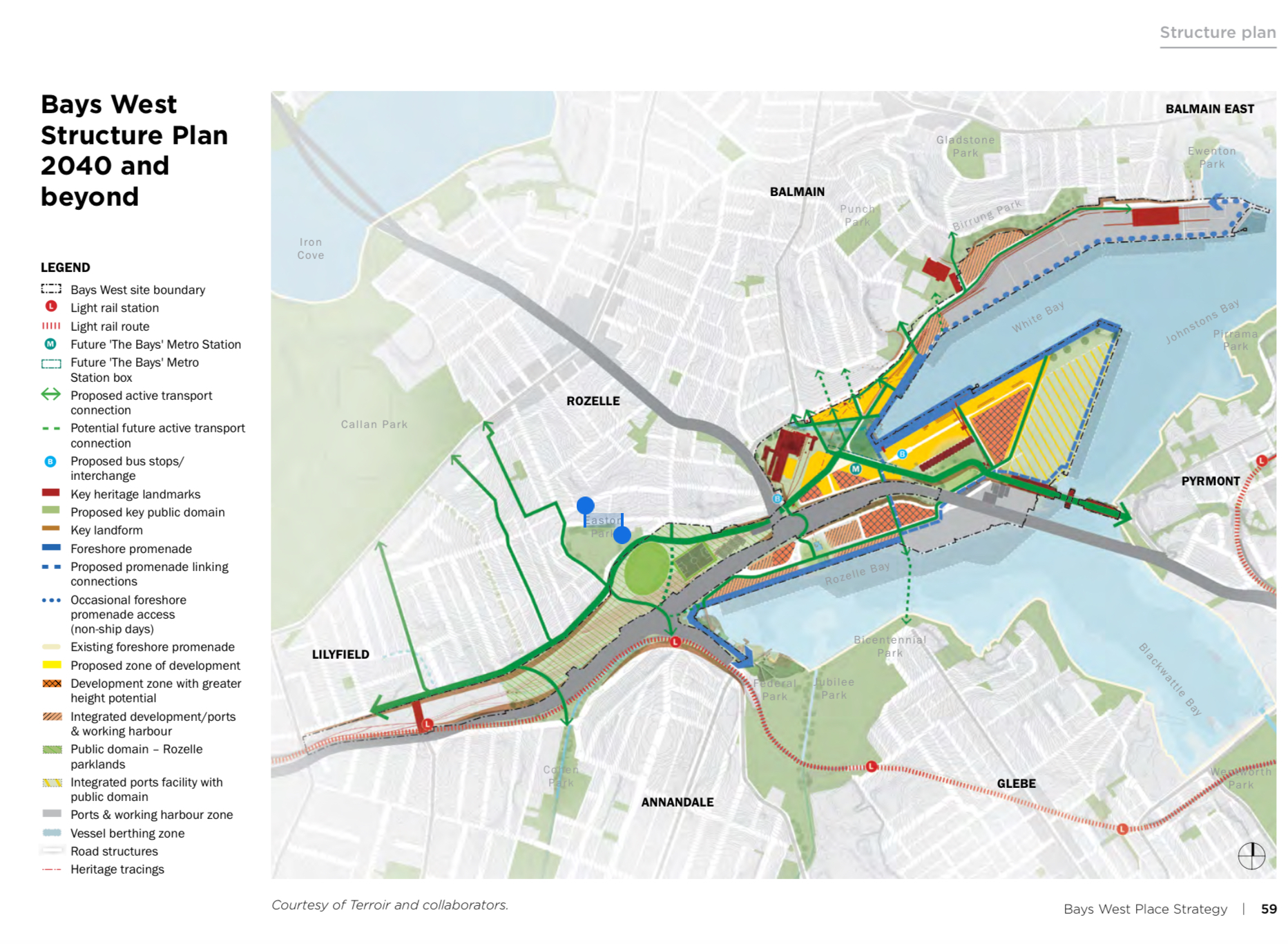The new park on Lilyfield Road opened in 2024, on the site of the Rozelle Goods Yards. The park was built by Westconnex for Transport for NSW as part of the surface improvement works in the M4-M5 and Rozelle Interchange tollway project.
As well as an attractive place people might choose to ride to, the new park is a crossroads for a number of bicycle routes, such as the Lilyfield Rd connection to Anzac Bridge, Rozelle or Balmain to Annandale routes (Gordon St to Whites Creek, Annandale St via the Green Bridge and Light rail crossing) and Rozelle/Lilyfield to Glebe via the Green Bridge to Johnston St and The Crescent.
These bike routes were identified in the Westconnex EIS and Rozelle Interchang Urban Design Landscape Plan. Council or State Government were expected to ensure the connections were upgraded as part of overall Active Transport strategies. That is, Westconnex were to do the new paths through the park (and also some on Victoria Rd and The Crescent) and other authorities were to improve or establish new connecting routes. “To be done by others”, as stated in the UDLP Active Transport Strategy. This has been the problem, “the others” have been slow to move, given the UDLP was published in 2016.
The fight since then has been to firstly make sure the paths through the Parklands and on Victoria Rd and The Crescent (provided by Westconnex and TfNSW) are up to a high standard and then to get the connecting routes (provided by Inner West Council mostly) improved or new ones built.
The path through the Parklands from Ryan St is an excellent one, 5 m wide with pedestrians and cyclists separated, and the Victoria Rd underpass is a huge improvement on the old narrow footbridge over Victoria Rd. The Green Bridge across the City West Link to Annandale is also good, except the ongoing connections to Glebe are poor ( long wait to cross The Crescent), and there is no provision for cyclists on Johnston St.
IWBC submitted a list of defects to Westconnex and State Government that we think warrant attention. There was a Parliamentary Inquiry into the Rozelle Interchange, which supported some of our submissions.
Inner West Council had issues with the new Parklands as provided by Westconnex and TfNSW (the latter are still the authority in control of the Parklands), if IWC was to eventually take control of the land. IWC decided to do a Masterplan, which delayed any action on bicycle connections, particularly on the Lilyfield Rd Cycleway, which was being drawn up by a consultant. A draft plan that we supported was shelved and a new brief given to the Consultant, further delaying this ongoing (since 2016) saga.
We made submissions to the Masterplan in early 2024 and again in early 2025, which have largely been ignored in the final Draft plan. Central to our submission was that the Parklands should be an Active Transport park, with travel by foot, bike or public transport strongly encouraged.
The Masterplan was approved on February 18, 2025, with one amendment, to retain the separated path arrangement, which for some reason Council had decided to change to a shared path arrangement. We are hopeful of a meeting with Council to go through our submission and see if anything can be added to the Masterplan.
The Lilyfield Rd Cycleway draft plan should now be revealed and put on public exhibition, so we can finally see how it connects to the new park. A major issue is the lack of a pedestrian and bike crossing on Lilyfield Rd at Ryan St, so east bound cyclists can turn into the park more safely. Despite the park being opened for over a year nothing was done to make the right turn across traffic safer.
Other issues are the decision by Inner West Council to install 81 angle parking spaces along the park frontage, and remove the bike lane. we say this is hardly promoting Active Transport, and space could be found to retain a bike lane.
More on the Lilyfield Rd cycleway history, Rozelle Interchange and Victoria Rd can be found on bikeleichhardt.org.



